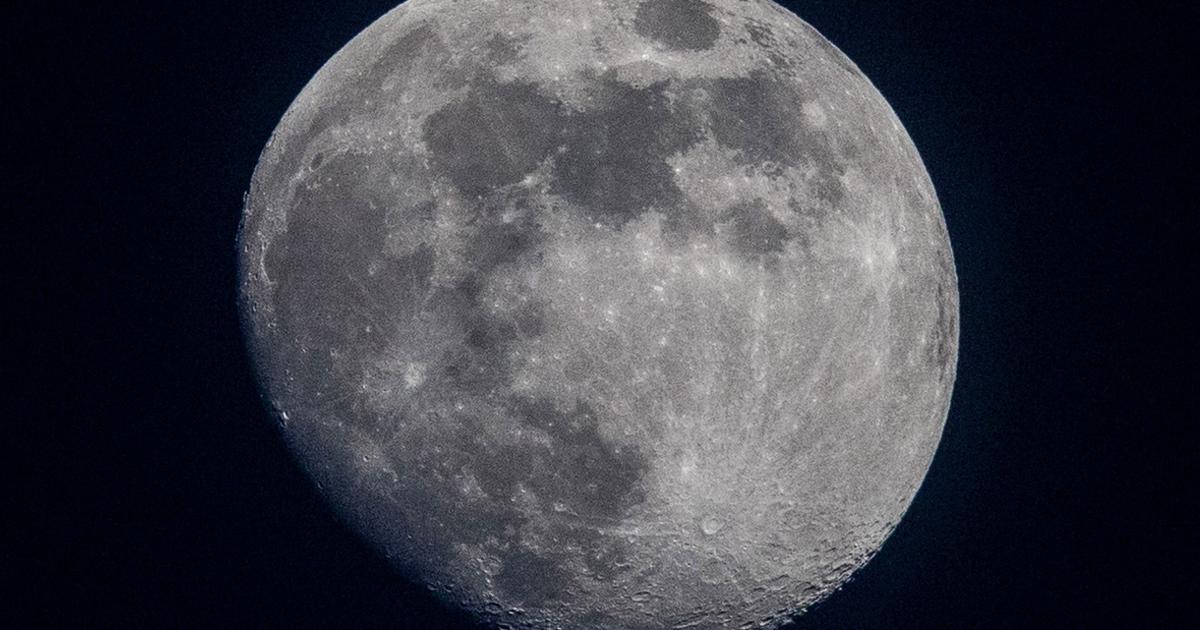Thomas Pesquet's second mission to the ISS, Perseverance on Mars, James Webb Space Telescope (JWST), space tourists ... With 2021, it is a year full of events that has ended for astronomy and astronautics.
But 2022 will not be left out: NASA's lunar program and some of the largest rockets ever built are set to make headlines.
Without forgetting the first results of the JWST, which flew last December 25, expected during the summer.
Here is a calendar to find your way around.
February 28 (at the earliest): Starship in orbit
We saw it fly several times last year, for a few minutes, at an altitude of 10,000 m and crash, most often, on landing.
This year, SpaceX's Starship launcher is expected to perform its first test in orbit around Earth.
This time, and for the first time, the ship will be launched via the 69m-high Super Heavy thruster.
Several other tests will be necessary to reach an altitude of 100 km, prior to the future launch of satellites.
Starship, which Elon Musk's company intends for Mars and other distant targets, has also been selected by NASA for upcoming moon landings, as part of its Artemis program.
February 28: first completely private mission to the ISS
While 2021 was the year tourists returned to the International Space Station, 2022 will be the first fully private mission to the ISS.
Operated by the company Axiom Space, it will see SpaceX's Crew Dragon spacecraft transporting three novices (an American, a Canadian and an Israeli) under the command of Michael López-Alegría, a former NASA astronaut.
They will stay in the station for eight days in order to conduct 25 experiments in microgravity.
Axiom is expected to launch a second mission in the fall of 2022.
March 12 (at the earliest): start of the Artemis lunar program
In the coming weeks, we should witness the inaugural flight of the SLS, the Space Launch System, a 98 m super-heavy launcher developed for more than ten years by NASA. If it is intended for future manned flights on the Moon, this first mission is unmanned. It consists of validating the operation of the Orion spacecraft which will, for the occasion, be placed in orbit around the Earth satellite. Two windows of fire are planned, for the moment: between March 12 and 27 and between April 8 and 23. Tests are still underway, after which NASA will be able to refine the launch date. Four humans will then be sent around the Moon during a second mission, Artemis 2, scheduled for 2024. Then it will be Artemis 3, in 2025: a man and - for the first time - a woman will set foot on the lunar soil.
May: decisive test for the Starliner ship
In 2019, she had failed to reach the ISS.
In May, Boeing will attempt to dock its Starliner spacecraft, developed for NASA, at the station again.
If the launch, which has been postponed several times, is not postponed again and is successful, a Boeing module will be able to transport three astronauts to the ISS this year.
Boeing would thus become the second private company, after SpaceX, to make this type of trip.
May 16: a total lunar eclipse, visible in Europe
In four months, the Moon will turn red!
The fault with the Earth which will come to be inserted between the Sun and itself, thus causing the first total lunar eclipse visible in metropolitan France since January 2019. The total phase will last precisely 1h24.
It remains to be hoped that the weather will be there.
Third quarter: Ariane 6 maiden flight
The main and upper stages of the first copy of the Ariane 6 rocket are currently on their way to Kourou, Guyana.
Depending on the tests that will be carried out upstream, the inaugural flight of Arianespace's new launcher should take place in the second half of 2022. This launcher will exist in two versions: Ariane 62 with two engines and Ariane 64 which has four. .
July: the Russians return to the moon
The last time a Soviet machine landed on the Moon was on August 14, 1976. Since then, the USSR has disappeared, but it is as an extension of the Luna program that Russia will launch Luna 25, lander wrapped around thirty kilos of instruments.
Direction: the South pole of the Earth satellite, in order to study its very fine atmosphere in particular.
First scheduled for 2019, the launch has been postponed several times.
Fourth Quarter: First Flight of Blue Origin's New Glenn
Last year, Jeff Bezos himself left for the gates of space to inaugurate his space tourism service.
If Blue Origin's current schedule is maintained, the company he created in 2000 will launch for the first time its super-heavy launcher New Glenn, a rocket over 80 m which takes its name from an astronaut from the Nasa, John Glenn.
Like SpaceX's Falcon Heavy, its first stage will be reusable.
September: a European robot leaves for Mars
If the launch, initially planned for 2018, is not postponed again, this year we should witness the departure to the red planet of the robot of the ExoMars mission, jointly led by the European Space Agency (ESA) and the agency. Russian Roscosmos.
It is named after Rosalind Franklin, the researcher who determined the structure of DNA but whose discovery was overshadowed by the work of three other scientists, who, unlike her, won the Nobel Prize.
October 25: partial solar eclipse
It will not be the eclipse of the century, but with good weather conditions and the right equipment, the French in metropolitan France could witness a passage of the Moon in front of the Sun during the fall.
To see a total eclipse in Europe, you will have to go to Spain or Portugal on August 12, 2026.















